Galvanic Isolation (GI)
Content
What is galvanic isolation?
Isolate and protect
Galvanic isolation is synonymous with "galvanic separation" and provides protection for man and machine against overvoltages. Galvanic isolation prevents dangerous equalizing currents and essentially separates the induced voltages between supply voltages. This prevents unwanted potential differences between circuits and ensures functioning grounding and cable shielding in different networks.
Galvanic isolators are completely transparent concerning the function of a device or system. They can be seen as an integrated protective circuit. Very well-known areas of application of galvanic isolation are isolating transformers and optical fibers.
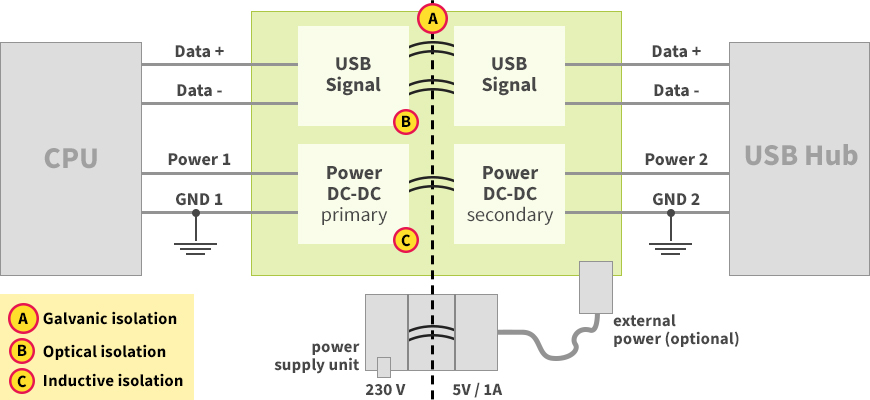
Please note
When using uninsulated or insufficiently insulated external power supplies on galvanic isolation, pay attention to the placement in the secondary circuit.
It is easy to understand the technical functionality behind this. Galvanic isolation is a not electrically conductive connection between two power or switching circuits. The power or switching circuits are completely electrically isolated from each other but remain connected with special coupling elements for power and data transmission.
Coupling elements of galvanic isolation
Pairing and networking
Coupling elements are the main technical components of galvanic isolation. They isolate current and voltage and transfer data and power between the current and switching circuits using various coupling methods. Used are [a.] optical, [b.] inductive or [c.] capacitive coupling elements at galvanic isolation. In the following, you can see the basic characteristics of these coupling elements.
[a.] Optical coupling elements → Optical isolation

- Technology: Optocoupler with LED and photodiode
- Couples: Data
- Isolation: 5 kV rms barriers
- EMC: Very good properties
- Application: RS-485 networks, RS-232 isolation
- Data transfer rate: < 100 Mbps
- External voltage supply or bus power
[b.] Inductive coupling elements → Inductive isolation

- Technology: Inductive coupling of two coils
- Couples: Power and data
- Isolation: up to 5 kV rms barriers
- EMC: Sensitive to interference from magnetic fields
- Application: DC-DC changer, power supply units, sensors
- Data transfer rate: > 100 Mbps
- External power supply for direct current
[c.] Capacitive coupling elements → Capacitive isolation

- Technology: Coupling capacity, modulated signals OOK (On-Off-Keying)
- Couples: Data
- Isolation: 5 kV rms barriers
- EMV: Susceptible to interference from external electric fields
- Application: Industrial interfaces
- Data transfer rate: High speed transmission
- Power supply is needed, high complexity
Practical advantages of galvanic isolation
→ Protection and insulation against overvoltages, lightning strikes, switching voltage and electrostatic discharge
→ Improved data transmission speed and higher range
→ (cf. galvanic isolation against common-mode interferences with RS-485 conductors, Delock Info Point)
→ No parasitic RF-transmissions
→ Potential-free coupling of circuits
→ No humming loops in audio systems
→ Error-free measurement results without ground loops
→ Etc.
Electromagnetic compatibility (EMC) support
Harmonize and balance
Currently available from Delock are products for galvanic isolation for USB and the LAN network. Likewise, Delock offers various options for galvanic isolation for industrial interfaces such as RS-232, RS-485 and RS-422. The use of appropriate products can be for prevention or direct interference suppression.
Galvanic isolation can support compliance with electromagnetic compatibility and thus required EMC guidelines. It can also be used as a suppression measure on cables and equipment, as it provides safety from overvoltages and also improves the resistance of circuits to interferences. Last but not least, it helps in the suppression of ground loops and the compensation of ground potential differences.
Variants of galvanic isolation: Delock product examples
Galvanic isolation for USB
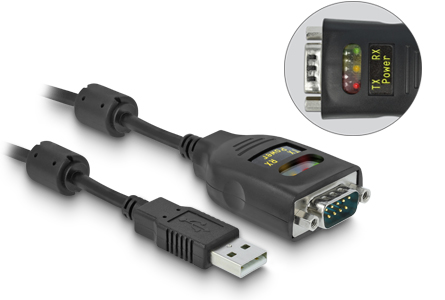
Item 64154
Adapter USB 2.0 Type-A to Serial RS-232 D-Sub 9 pin • 2.5 kV galvanic isolation • 2 m
The adapter provides a compatible RS-232 DB9 interface for printers, measuring instruments, controllers, IoT devices, etc. It completely decouples the USB and RS-232 connection and the USB power supply . []

Item 62588
USB Isolator with 5 kV Isolation
This USB converter separates the electrical connection between Host-PC and USB device. The galvanic isolation avoids the disturbing noises in the audio field and inexact measuring results in the laboratory field. []
Galvanic isolation for network
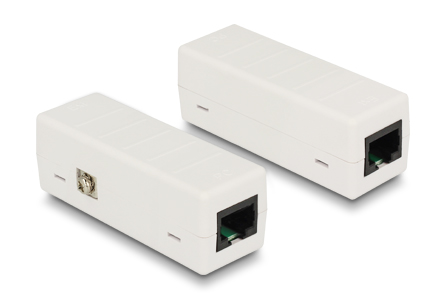
Item 62619
Network Surge Protector 6 kV RJ45
The RJ45 insulator protects a device from power surges on an attached network connection. The compact device supports Ethernet with 10/100/1000 Mb/s.

Item 62920
Network Surge Protector 6 kV RJ45 with PoE
This RJ45 insulator protects a device from power surges on an attached network connection. The compact device supports Ethernet with 10/100/1000 Mb/s and Power over Ethernet.
Galvanic isolation for RS-232 / RS-485 / RS-422
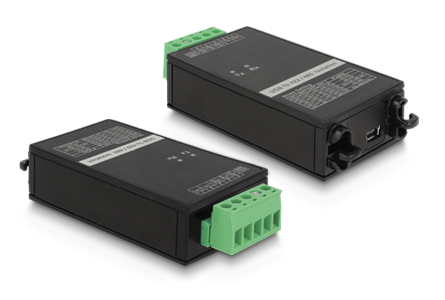
Item 62501
Converter USB 2.0 zu Serial RS-422/485 • 3 kV
The converter offers an RS-422/485 connection for measuring device, POS systems, printers, modems, IoT devices, etc. The galvanic isolation prevents data transmission errors with uneven earthing potentias, ground loops or voltage spikes. []
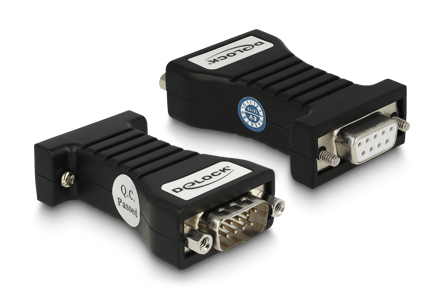
Item 62921
Isolator 1 x Serial RS-232 DB9 female to 1 x Serial RS-232 DB9 male • 3 kV
This isolator protects all connected devices such as computers, machines, controllers, measuring devices, etc., aganinst electromagnetic and electrostatic discharges as well as surge. []
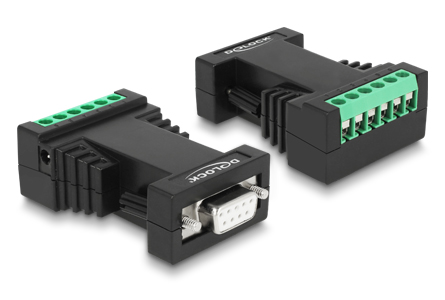
Item 87686
Converter 1 x Serial RS-232 to 1 x Serial RS-422/485 • ESD protection 15 kV • Surge protection 600 W • 2.5 kV isolation
This RS-232 to RS-422/485 converter with extended temperature range of -40 °C ~ 85 °C is suitabe for all serial deivices, e.g. on machine controls, fieldbus systems, measuring instruments, computers, printers, etc. []
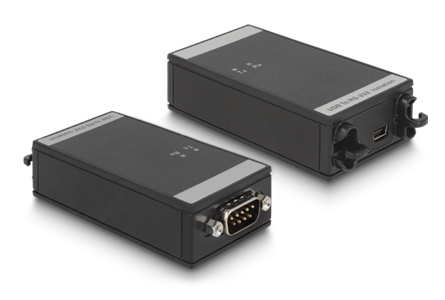
Item 62502
Converter USB 2.0 > Serial RS-232 • 5 kV isolation
The USB 2.0 to serial RS-232 converter offers an RS-232 connection for measuring devices, POS systems, printers, modems, IoT devices etc. The galvanic isolation prevents data transmission errors with uneven earthing potentials, ground loops or voltage spikes. The converter is suitable for DIN rail mounting. []
